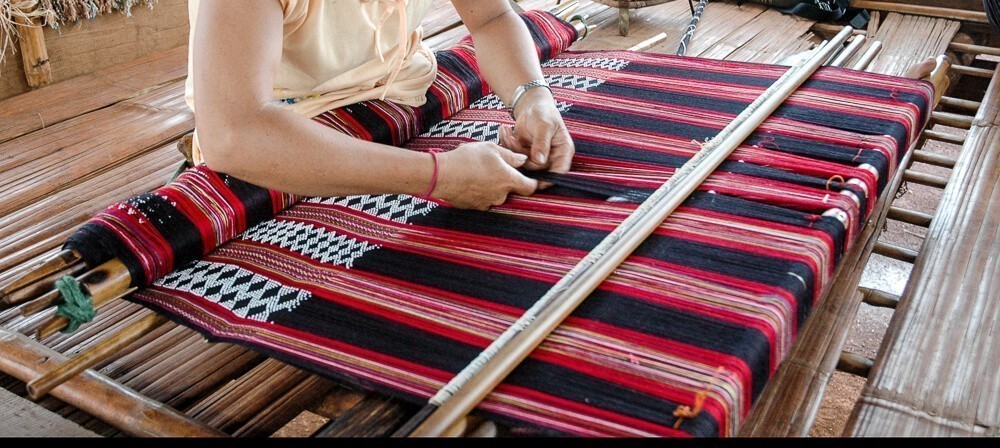The Katu are skilled hunters and farmers who practice swidden agriculture and live in the Annam Mountains in southern Laos and central Vietnam (the Central Annamite Mountain region). Their total population, which amounts to approximately 300,000 people, is evenly divided between the two countries.
Because of their remote and inaccessible habitat, the Katu have kept many of their cultural traditions. They believe that a powerful (female) Creator Spirit inhabits the Sky, and more generally believe in nature spirits.
Katu women weave textiles on a backstrap loom – an ancient technique for creating cloth. Cloth is often decorated with beads, and will be sewn into simple skirts and tunics.
Katu villages feature a distinctive community house (rong) that symbolizes their unity and identity, and hosts their guardian spirit. They also include small tomb houses (ping) where the bones of all deceased members of a lineage group are kept. All these tomb houses form the Katu cemeteries, or villages of the dead, where the ancestor spirits live. The village of the living and the village of the dead complement each other: the living need the ancestors for protection and the ancestor spirits depend on their living descendants for care and attention in the form of ritual food offerings.
Sadly, these rich cultural practices and rituals are not widely known, and the Katu with their traditional, subsistence agricultural life, are generally depicted as being very poor and even primitive. The fact that many of them live in Xekong province, Laos’ newest and poorest province, contributes to this false image.


